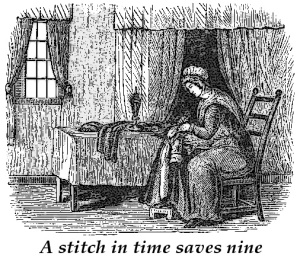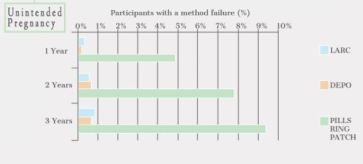Nationally, we spend 11 billion taxpayer dollars a year on unintended pregnancies. But who’s counting? Automatic cuts built into the sequester slashed $86 million from family planning and reproductive health care for poor women. That is not enough for Congressional Republicans, who are trying yet again to roll back the contraceptive mandate. If there ever was an indication that they are more interested in ideology than balanced budgets, this is it.
Research published this fall showed that effective, affordable, accessible contraception dramatically drops the rate of unintended pregnancy and related public health costs. In the study, whose co-author explained that it was essentially designed to mimic Obamacare, 9,000 St. Louis youth and women were offered the free contraceptive of their choice. Three quarters chose a top-tier, long acting reversible contraceptive (LARC) - meaning a state-of-the-art implant or IUD – and both teen pregnancy and abortion need plummeted. Two years later, the teen pregnancy rate was at 6 per 1,000 rather than the national average of 34.
The abortion rate fell to 80 percent below the national average.Unintended pregnancies can have broad ripple effects, straining family and community resources. Maternal drinking or poor nutrition in the weeks right before and after conception may increase birth defects, and as a consequence, the Centers for Disease Control (CDC) has launched a pre-conception nutrition campaign encouraging women to prepare before becoming pregnant.
Because of the strong correlation between unplanned pregnancy and poverty, most unplanned births are paid for on the public dime. In 2006, Oregon spent $72 million on births from unintended pregnancies. In Washington State, during fiscal year 2012, Medicaid paid $700 million for prenatal, delivery and infant care. When asked by the state Department of Health, approximately half of the women who received this care said that they would have preferred to get pregnant later or not at all. The State of California saved an estimated $2.2 billion over a five-year period by increasing birth-control access for residents who fell below 200 percent of the federal poverty level. But the costs don’t begin or end at birth.
Even with all of those public dollars flowing in to support moms and kids, the statistics are dismal, especially for teens. Only 40 percent of the girls who give birth between ages 15 and 17 ever graduate high school, compared to 90 percent of their peers. A mere 2 percent graduate from college by age 30. Their offspring are at higher risk to have mental health problems, health problems and academic problems. Male offspring are more likely to end up in the criminal justice system. Girls are more likely to end up pregnant as teens. We often want to give young people the most supportive, affirming perspective possible – to talk about what is possible rather than what is probable. But the reality is that the cycle of teen pregnancy and poverty stacks the odds against both moms and kids.
New York City is taking heat for what proponents have called a “brutally honest” ad campaign about teen pregnancy. It includes posters that say, “Dad, you’ll be paying to support me for the next 20 years.” “Honestly mom, chances are he won’t stay with you.” And “I’m twice as likely not to graduate high school because you had me as a teen.” Some teen advocates say the campaign is unnecessarily cruel or stigmatizing. But others, including some with firsthand experience, think that kids are best served by knowing what’s real. Here’s what one online commenter on an article about the campaign had to say: “Not all teen parents are terrible, mine happened to be great and always used their struggles as an example for us. Teen pregnancy is a vicious cycle. If this ad makes one teen think about the consequences of their actions, then it’s worth it.”
Some young women choose to get pregnant, but most of the problem is what I call go-with-the-flow childbearing. Half of all pregnancies in the United States are unintended. For unmarried women under 30, that number is 70 percent. For teens, it is over 80 percent. A host of factors can interfere with effective contraception, including fatigue, forgetfulness, finances, domestic conflict, substance abuse and ambivalence. That is why long acting “fit and forget” methods like implants and IUDs are 10 to 50 times more effective than the pill, and why they are recommended by the National Campaign to Prevent Teen Pregnancy. One in 12 women relying on the pill gets pregnant each year. (With condoms, that’s one in eight; with no birth control, it’s eight in ten.) With an IUD or implant, that rate drops below one in 500.
Teens are particularly unreliable at taking the pill, and are even more vulnerable than older women to barriers including costs and delays. Asking a teen to come back next week or go to another clinic can be one step too many, so public health experts increasingly recommend bringing services to youth via the growing system of school-based health clinics. But this requires that teens have the right to access services. When the state of Texas implemented parental notification requirements for teens seeking contraception and abortions, the teen birth rate went up, second trimester abortions went up, and state budgets took a hit to the tune of $40 million annually. When Texas cut funding for family services in 2011 as a way to kill Planned Parenthood, state budgets took another hit. Health officials projected last year that the $73 million in cuts would produce 24,000 additional unplanned births, costing the taxpayers $273 million. Now Texas Republicans are quietly proposing to restore the funding.
In Washington State, the Supreme Court ruled that the state has failed in its duty to fund education, which has put other programs, possibly including contraception, on the chopping block. Should this happen, we know the consequences. Unintended pregnancies disproportionately increase the need for special services in education, and they lower graduation rates. In King County, home of Seattle, approximately 300 babies are born each year to girls between the ages of 15 and 17. That’s enough to fill an entire grade school when those kids hit kindergarten. It doesn’t have to be this way. As the St. Louis lesson teaches, we now have the technology and tools to make most unintended pregnancy, teen pregnancy and abortion-need things of the past.
Cutting family planning is not conservative – not from the standpoint of conserving funding, nor from the standpoint of taking a precautionary approach to public health, nor from the standpoint of listening to the wisdom of our ancestors. Foresight is a hallmark of intelligence. It is also the virtue that our grandparents extolled when they quoted those old sayings – a pound of prevention, a stitch in time. Winston Churchill put it thus: “Want of foresight, unwillingness to act when action would be simple and effective … until the emergency comes, until self-preservation strikes its jarring gong, these are the features which constitute the endless repetition of history.”
The biblical book of Proverbs opens with these words: “The proverbs of Solomon, David’s son who was king of Israel, given to grasp wisdom and discipline, to understand deep thoughts, to acquire the discipline of wise behavior . . . to give knowledge and foresight to the young.” Any parenting book will tell you that the best way to teach wisdom and foresight to young people is to model it. Someone should tell Congress.
Copyright, Truthout / Away Point / IEET. Reprinted with permission.
Related:
A Contraceptive Revolution: Lowering remaining barriers.
The Pill is 1965 Technology
Exorcising the Dalkon Shield – Time to get over a bad (contraceptive) romance.
Does Your Contraceptive Cause Weight Gain?
A Brief History of Your Period and Why You Don’t Have to Have It
Picture a Technology Revolution. In Contraception. It’s Here.
Dramatic Drop In Teen Pregnancy Really a Technology Tipping Point
Pamper, Pamper, Pamper – Plus 9 Other Tips for Falling in Love With Your IUD
The Big Lie About Plan B – What You Really Should Be Telling Your Friends
Valerie Tarico is a psychologist and writer in Seattle, Washington. She is the author ofTrusting Doubt: A Former Evangelical Looks at Old Beliefs in a New Light and Deas and Other Imaginings, and the founder of www.WisdomCommons.org. Her articles can be found at Awaypoint.Wordpress.com and videos on the psychology of religion atYouTube:AwayPoint.



